Hummingbirds! Pint-sized birds belonging to their own unique family “Trochilidae.” (1) These birds are the jewel-colored flowers of the avian kingdom. They commonly visit gardens and are the smallest birds that migrate. Hummingbirds have a ton of personality packed into their diminutive bodies.
Male hummingbirds tend to be quite territorial and will chase each other through the air, performing acrobatic twists and flashing vibrant plumage all the while. Additionally, these birds fill an important ecological role. Hummingbirds are pollinators. (2) The diet of the hummingbird is mainly comprised of nectar from flowers. They use their long specialized bills and tongues to sip nectar, and in the process hummingbirds are dusted with pollen which they continue to distribute to the other flowers from which they feed.
This role is so important that some species of flowers can only be pollinated by hummingbirds. In these cases, the flowers and hummingbirds have coevolved together. The flower’s shape, color, and even the flavor of its nectar has evolved to suit the hummingbird. The hummingbird’s bill shape is often specialized to fit the flower that it feeds on. (3) So, without hummingbirds there are many species of flowers that would suffer, and perhaps even face extinction.
It’s no surprise, considering all of this, that many people treasure hummingbirds as garden visitors. Attracting hummingbirds can be as easy as planting some flowers and hanging a feeder or two, and the reward for doing so can range from a dazzling view of these little performers to a valuable boost to your garden’s growth and survival. Attracting hummingbirds as visitors is great, but if we are to be certain that they will continue to visit, the best strategy may, in fact, be to encourage hummingbirds to nest.
In this article, we will explore hummingbird nests. From facts about these birds and their reproductive habits to tips and tricks for encouraging them to call your garden home the reader will gain a deeper understanding of attracting hummingbirds. For any birder, gardener, or nature-lover who eagerly listens for the thrumming of hummingbird wings, here is a guide to hummingbird nests!
| Latest Articles: |
|---|
| Snowy Owl Symbolism & Meaning Goldfinch Symbolism & Meaning Top Online Fortune Teller Sites (2022) 12 Best Bushnell Binoculars (2022) |
Attracting Hummingbirds to Nest
Attracting hummingbirds to nest is deceptively simple. Put simply, the best way to attract hummingbird nests is to attract hummingbirds!
Firstly, hummingbirds are most inclined to visit gardens in which they may find plenty of flowers to feast on. Your local flower shop may recommend certain flowers as being pollinator magnets. In the case of hummingbirds a good variety is the way to go. Tube-shaped flowers like Salvia and Lupines are always a safe bet. Showier blooms like Lantanas, Bee Balm, and Hollyhocks often do the trick as well. Believe it or not, much like humans, hummingbirds are attracted to a meal that looks as delicious as it tastes! They tend to appreciate an array of colorful blooms, and often favor the color red. (4) Growing lots of colorful flowers in bunches, especially with plenty of red blooms, is a surefire way to get some hummingbird visitors.
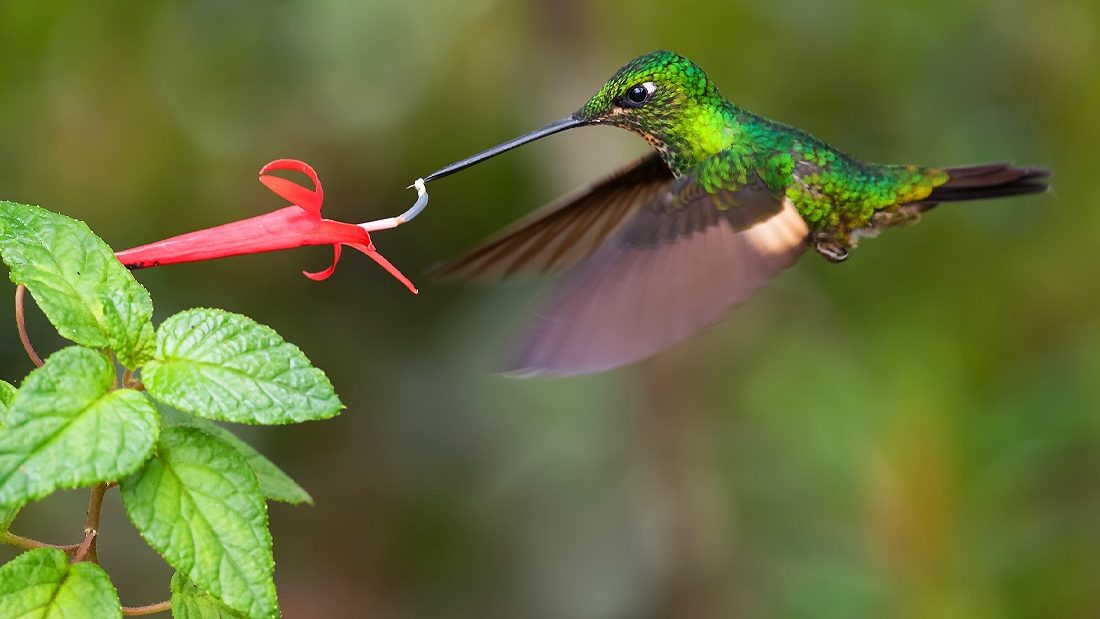
Hummingbirds are more likely to visit gardens in which they feel safe and have plenty of access to the flowers that they like. For this, a large open garden is not always the best move. Often, narrower gardens with plenty of plant cover make hummingbirds, and other avian visitors, feel safe enough to stay awhile. If you watch hummingbirds often, you’ll notice that they often land on trees and shrubs. It’s easy to imagine that all the whizzing around is exhausting, and that the birds are grateful for a safe spot to take a quick break. Small trees with thin branches and ample shrubbery are a great way to provide hummingbirds with plenty of places to land and rest for a bit.
One easy way to tempt visiting hummingbirds to stay in your garden is to place hummingbird feeders. Unlike other birdfeeders, which are typically loaded with seeds, hummingbird feeders dispense a liquid “nectar.” These feeders often take advantage of the hummingbird’s love for bright colors. They usually come in red and mimic flowery shapes. Just be sure to refill and sanitize often to prevent attracting pests or spreading harmful bacteria.
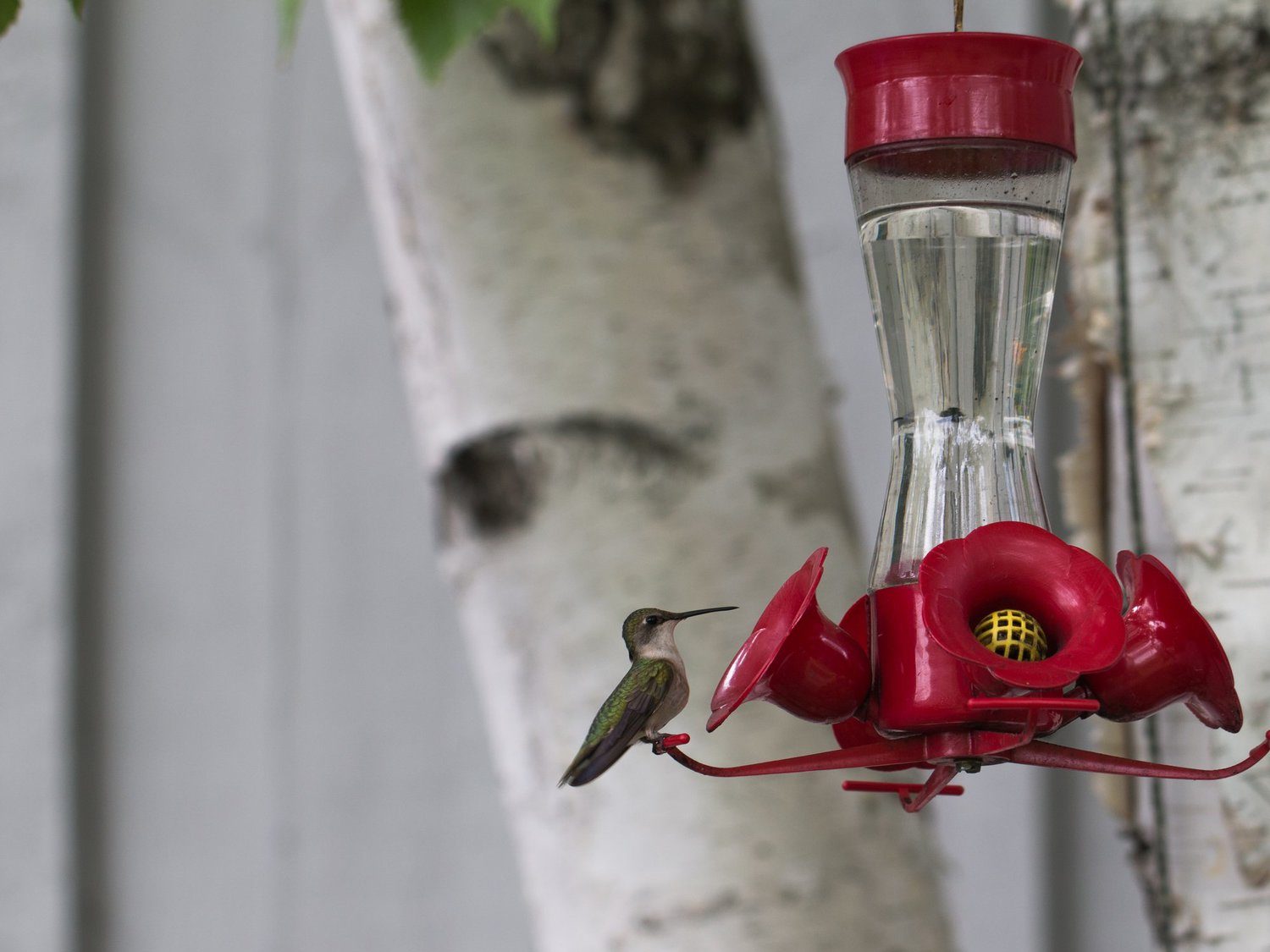
Additionally, if you want hummingbirds to stay in your garden, it is important to limit certain hazards. Predators are a serious threat to hummingbirds. Though some of these predators cannot be eliminated completely, there are measures that you can take to deter them. For one thing, pet cats should ideally be kept indoors. Cats are the number one threat to birds and the easiest way to ensure that birds do not feel safe enough to nest in your garden. (5) A fence can help prevent strays and neighborhood cats from turning your hummingbird garden into their hunting ground. Making sure your feeder is high and out of reach from smaller predators is a good strategy as well.
On the subject of hazards, when planning a garden that is friendly to any form of wildlife, including pollinators and birds of all kinds, it is important to limit the usage of harmful pesticides. Before exposing your garden to chemical dangers, thoroughly research the impact of the substance in question. Natural alternatives to pesticides are widely available and effective.
Hummingbirds may also be attracted to water features. A birdbath is an easy way to ensure that all of your winged visitors get plenty to drink. In some cases, a bird bath can be an even bigger draw for visiting birds than a traditional feeder. As with feeders, though, regular cleaning and sanitization are important steps to safeguard the health of your garden’s visitors.
Providing nesting materials may also entice hummingbirds to nest. Plants with soft fibrous parts are a good source of nesting materials. Ornamental grasses and plants like Lamb’s Ear and Milkweed often provide materials that hummingbirds use to cushion their nests. (6) Once again, a good variety of greenery is the best way to go about it.
Hummingbird Nest Facts
Are you certain that there are no hummingbird nests in your garden right now? You may be surprised to find that hummingbirds may already be nesting right under your nose. If you’ve put in the work to make your garden as hummingbird-friendly as possible, don’t be too disheartened if you can’t spot any nests. Hummingbird nests are very difficult to detect.
Hummingbird nests are usually quite small, and are often coated with a camouflaging layer of lichen and moss. (7) So, spotting one of these nests is usually a matter of luck and persistence. Just know that, if you cannot spot the birds’ nests, then they’re doing a great job at keeping their young safely hidden. This means more hummingbirds to appreciate!
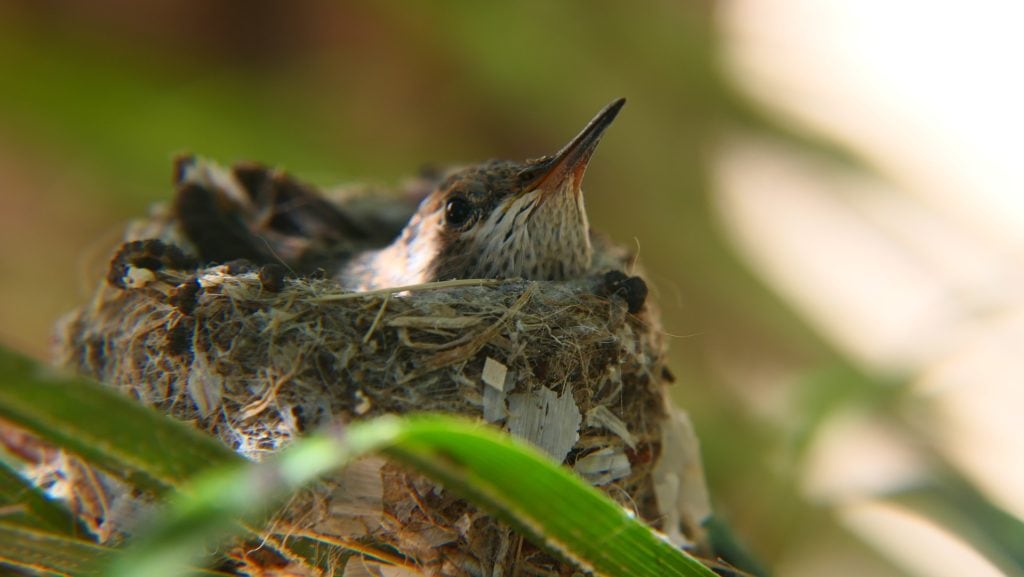
The tiny nests that hummingbirds construct often resemble knots on bark or clumps of vegetation. Though small, these constructions are very impressive. Hummingbirds like to build strong cushiony nests which allow their eggs and offspring to rest comfortably on a bed of plant fibers. This soft construction also allows for one of the more interesting features of these nests: they grow to accommodate the growth of hummingbird chicks! Perhaps “growing” is not the correct word. These nests of woven fibers are built so that they slowly stretch as needed. (8) This impressive feature allows for nests that snugly fit the tiny bean-sized eggs of the hummingbird as well as several (still pretty small) nearly adult-sized adolescent hummingbirds.
What are Hummingbird Nests Made of?
In order to maintain their shape, softness, camouflage, and stretchy quality, hummingbird nests are built from a variety of collected materials. Mostly, these nests are made of plant materials.
Like most bird’s nests, hummingbirds use small twigs and leaves to construct a woven cup or basket shape. After a basic shape is constructed, the hummingbirds begin to show their architectural genius! They collect bunches and bunches of spider webs. Then, the hummingbirds meticulously weave the spiders’ silk strands throughout their base construction. This holds it all together. Using this weaving technique, they also firmly anchor the nest to the branch on which it sits. This keeps their work safe from slipping and falling. Hummingbirds can sometimes nest quite high and a fall would likely mean disaster. Once the nest is securely built and anchored, hummingbirds cover the outside with lichen and moss for camouflage. This is also kept in place with spiders’ silk. The inside of the resulting cup-shaped nest is often lined with soft cottony plant materials from catkin-bearing trees such as birch and willow. (9)
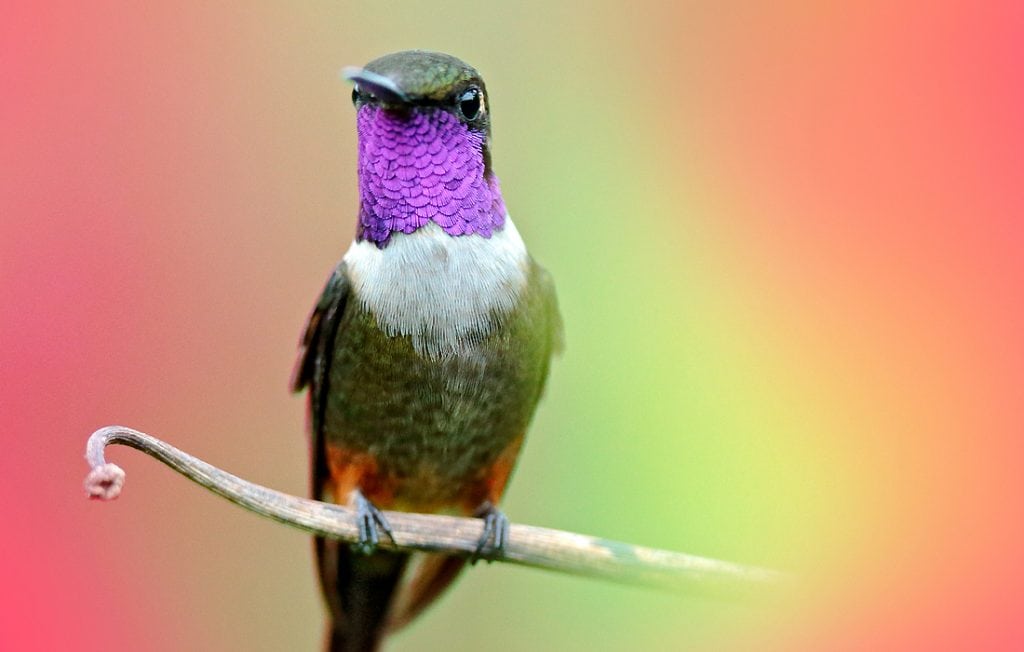
How Big are Hummingbird Nests
Hummingbirds’ nests come in a variety of sizes corresponding to the hummingbird that built them. Note, though, that since no hummingbirds come in particularly large sizes, all hummingbird nests could be generally described as “small.”
A typical hummingbird’s nest is about an inch to an inch and a half in diameter. This is about the size of a tea candle or a walnut. These nests will stretch slightly once the eggs inside begin to hatch and the chicks begin to grow.
Where to Find Hummingbird Nests
As stated above, finding hummingbird nests can be difficult. It’s important to remember that the safety of the nest is much more important than the joy of discovering its location. If you would like to cautiously observe a hummingbird’s nest, here are a few tips regarding where they might be found.
Hummingbirds tend to build nests that are near all of the things that they need. Proximity to water, food, and shelter is an important consideration. In places where these necessities can be found, look for small knot-like clumps with leaves or lichen covering them. These are usually found on thin branches of trees or shrubs. Denser shrubbery is more protective so they may be found in thorny, hard-to-reach spots. In addition, nests are often built in forking branches. This gives the nest additional stability. Hummingbirds are willing to nest low to the ground or high in trees provided the location is suitable. A height range of about three feet up to about sixty feet is typical. (10) In urban environments it is possible to find hummingbird nests in unconventional locations, but trees and shrubs are your best bet for spotting them.
If you do spot a hummingbird’s nest, be sure to enjoy this sight from a safe and respectful distance. Startling the nesting mother may cause her to abandon the nest. This would endanger any eggs or chicks that she may be rearing.
Hummingbird Eggs
The purpose of a hummingbird nest is, of course, to hatch eggs and raise the chicks inside in relative safety. Hummingbird eggs need all of the protection that they can get. Most female hummingbirds lay eggs in clutches of two. These eggs are usually no more than half of an inch in length. This is about the size of a fingernail! (11)
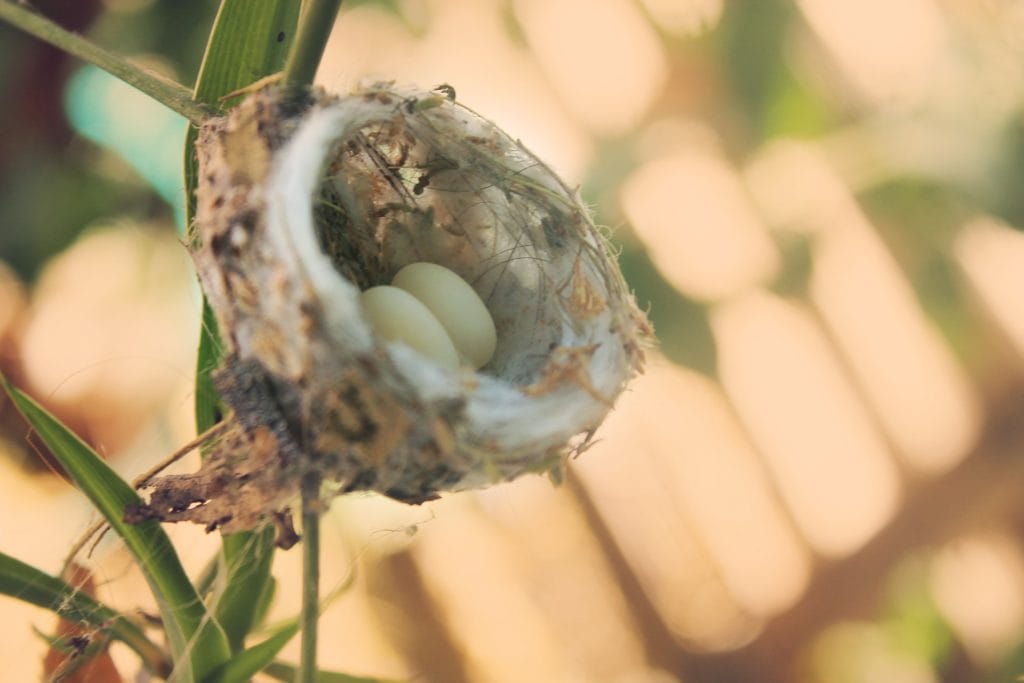
Hummingbirds incubate their eggs for between two and three weeks, after which they continue to feed their young in the nest for up to a month. A month and a half to two months after the eggs are laid, the baby hummingbird chicks are ready to fledge.
Conclusion
If you are looking to attract hummingbirds to nest in your garden, the reasons why are quite obvious. Hummingbirds are a common favorite for birdwatchers, gardeners, and those who enjoy the outdoors. These birds fit right into the garden landscape, their vibrant colors and delicate size liken them to the very flowers that attract them. Their beauty is indisputable as is the contributions of hummingbirds to the garden ecosystem. In short, wanting hummingbirds to visit your garden is a no-brainer.
Hopefully, you’ve finished reading this article and, like a hummingbird’s wings, you are buzzing with ideas to turn your garden into a hummingbird paradise. Building a garden that tempts these birds to nest can be hard work, but hummingbird nests in your garden is a completely attainable goal and the rewards are well worth it. When it comes to nature, and humanity’s role within it, it is often the case that you get back what you give. With a bit of effort, hummingbirds will come and reward you with the joy of a flourishing garden and an entertaining show.

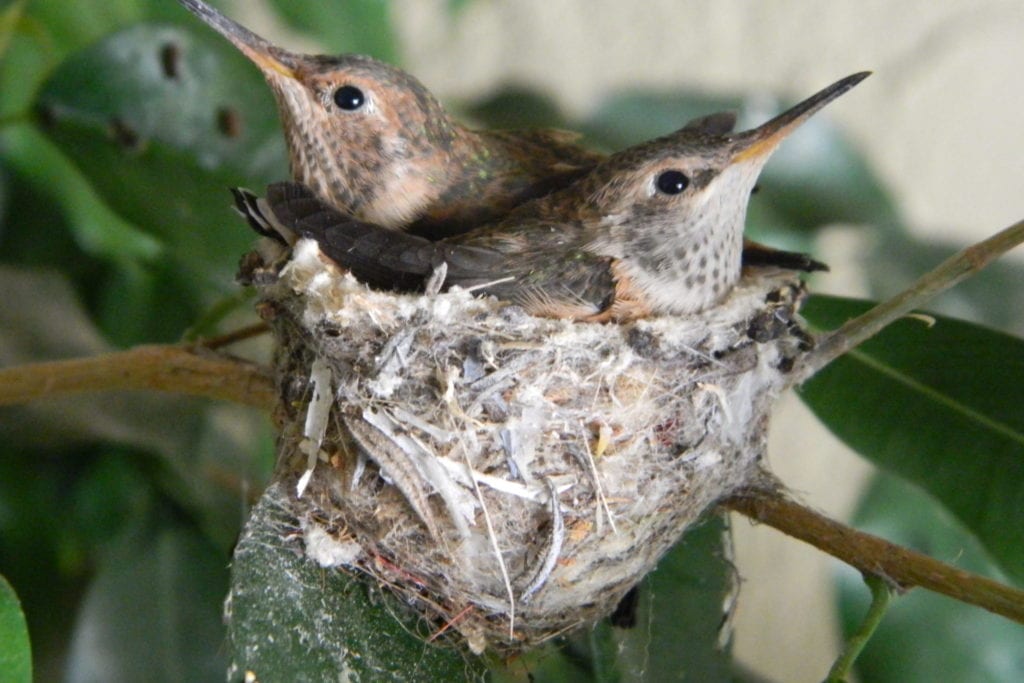
Thank you for a most informative article. I discovered a nest with two baby chicks in my patio in an empty hanging wire basket. I have now hung three feeders far away from the nest.
Humming birds are 1 of my favorites. I may have missed it in this article. When is it time to put out the feeders and nesting material
That depends a bit on your region. In California, for example, hummers are present year round so a feeder will always have a good shot at attracting attention. For many other regions, hummingbirds are seasonal visitors. Research which hummers you can expect to find where you live and which times of year you can expect to see them. I also recommend putting your feeder out early as birds are often suspicious of human objects for a period of time. You can always hang an empty feeder during the off season and then fill it when the hummers are beginning to arrive.
Thank you for reading my article and I hope this helps!
— Hailey Brophy
Writer @ World Birds